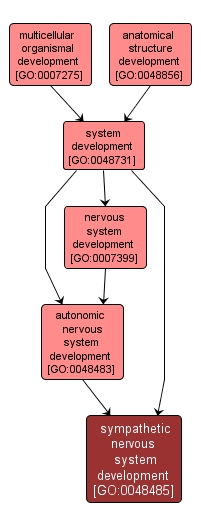| Desc: |
The process whose specific outcome is the progression of the sympathetic nervous system over time, from its formation to the mature structure. The sympathetic nervous system is one of the two divisions of the vertebrate autonomic nervous system (the other being the parasympathetic nervous system). The sympathetic preganglionic neurons have their cell bodies in the thoracic and lumbar regions of the spinal cord and connect to the paravertebral chain of sympathetic ganglia. Innervate heart and blood vessels, sweat glands, viscera and the adrenal medulla. Most sympathetic neurons, but not all, use noradrenaline as a post-ganglionic neurotransmitter. |














